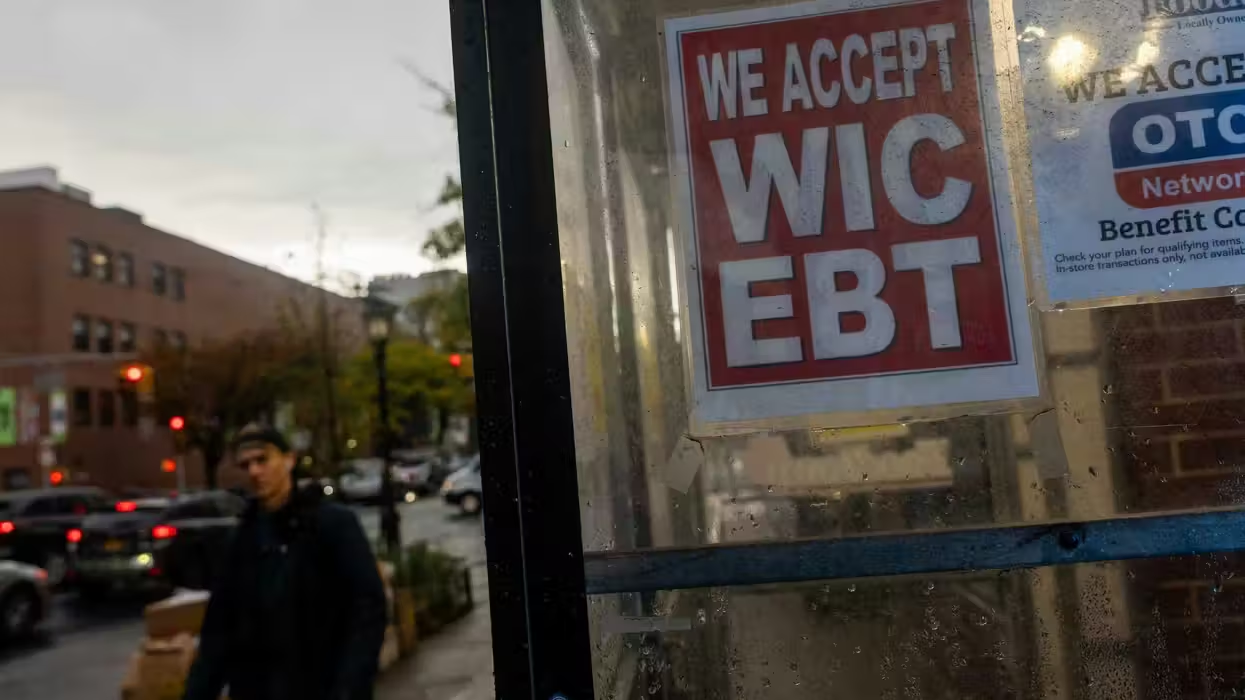Continuing the Obama administration's shunning of Congress, Agriculture Secretary Tom Vilsack heralded the unilateral establishment “climate hubs” across the country.
 Agriculture Secretary Tom Vilsack announces new climate zones to help farmers deal with climate change, Wednesday, Feb. 5, 2014, during the daily news briefing at the White House in Washington. The government will assess the climate risk in each of these zones, such as forest fires, drought, floods and then help farmers deal with it. (AP Photo/Pablo Martinez Monsivais) AP Photo/Pablo Martinez Monsivais
Agriculture Secretary Tom Vilsack announces new climate zones to help farmers deal with climate change, Wednesday, Feb. 5, 2014, during the daily news briefing at the White House in Washington. The government will assess the climate risk in each of these zones, such as forest fires, drought, floods and then help farmers deal with it. (AP Photo/Pablo Martinez Monsivais) AP Photo/Pablo Martinez Monsivais
“These climate action hubs are really part of the president's climate action plan and its directive of us to actually act, not wait for Congress, not wait for laws to be passed, but to do it on our own,” Vilsack said at the White House Wednesday.
Regional Hubs for Risk Adaptation and Mitigation to Climate Change will be located in seven locations around the country, Vilsack told reporters. He said farmers and ranchers have a direct interest in combating climate change because of the adverse impacts of storms and droughts on land.
The climate hubs are supposed to address and mitigate the risks fires, invasive pests, floods and droughts on a regional basis to assist farmers, ranchers, and forest landowners. The hubs are also designed to link a network of universities, non-governmental organizations and federal agencies such as the Department of Interior and the National Oceanic and Atmospheric Administration and state agencies.
Responding to a question about being dismissive of Congress, Vilsack stressed that the administration worked with Congress to push the recent farm bill through which President Barack Obama is set to sign.
“As the president has said repeatedly, if there is an opportunity to work with Congress, we will work with Congress, and we did,” Vilsack said. “We've been waiting a while for Congress to work on climate. Fair enough. There are multiple reasons why they haven't. But in the meantime, we're going to take action because 51 percent of the land mass of the United States is a lot of land. It's over 1.2 billion acres of land.”
He added, “I think we're trying to work with Congress when we can and when they can't or won't, we're going to continue to act. That's what I think the American public wants us to do.”
The theme of Obama's State of the Union address last week was his pledge to use his executive authority whenever possible to get things done when Congress won't act on his policies.
The Midwest hub will Ames, Iowa, a state where Vilsack was formerly governor. A “sub-hub” for the Midwest will be in Houghton, Mich. The Northeast hub will be in Durham, N.H. The Southeast hub will be in Raleigh, N.C., with that region's “sub-hub” in Rio Piedras, Puerto Rico
The Northern Plains hub will be in Fort Collins, Colo. The Southern Plains hub will be in El Reno, Okla. The Pacific Northwest hub will be in Corvallis, Ore. The Southwest hub will be in Les Cruces, N.M., with that region's “sub-hub” in Davis, Calif.
According to the USDA, the fire season is 60 days longer than it was 30 years ago, posing a greater risk to forest. The USDA is projecting an increased threat of insect outbreaks, fire, drought and storms over the next 50 years. Droughts were estimated to cost the U.S. about $50 billion from 2011 to 2013, according to the USDA.
“What impacts agriculture and forestry matters,” Vilsack said. “We've obviously seeing a significant number of severe storms, very early snow storms that devastated live stock in the Dakotas, the recent drought in California, which is now going into its third year but now is very intense, is a reflection of the changing weather patterns that will indeed impact and affect crop production, live stock production, as well as an expansion of pests and diseases that could compromise agriculture and forestry.”
Follow Fred Lucas (@FredVLucas3) on Twitter.

 Agriculture Secretary Tom Vilsack announces new climate zones to help farmers deal with climate change, Wednesday, Feb. 5, 2014, during the daily news briefing at the White House in Washington. The government will assess the climate risk in each of these zones, such as forest fires, drought, floods and then help farmers deal with it. (AP Photo/Pablo Martinez Monsivais) AP Photo/Pablo Martinez Monsivais
Agriculture Secretary Tom Vilsack announces new climate zones to help farmers deal with climate change, Wednesday, Feb. 5, 2014, during the daily news briefing at the White House in Washington. The government will assess the climate risk in each of these zones, such as forest fires, drought, floods and then help farmers deal with it. (AP Photo/Pablo Martinez Monsivais) AP Photo/Pablo Martinez Monsivais






